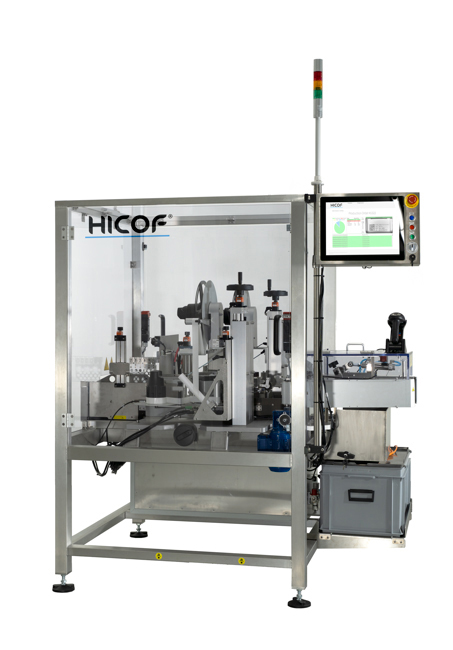In a world where counterfeiting and product tampering continue to pose significant threats to businesses and consumers, tamper-evident labels have emerged as a powerful solution. These labels act as a seal of authenticity, providing visual evidence of any tampering attempts and ensuring that consumers can trust the integrity of the product they are purchasing.
Tamper-evident labels come in various forms, including void labels, destructible labels, and security seals. Each of these options has unique features that make it nearly impossible to remove or alter the label without leaving visible signs of tampering. This not only deters potential criminals but also gives consumers peace of mind knowing that the product they are buying has remained intact throughout its journey.
Moreover, tamper-evident labels play a crucial role in building consumer trust. When a company takes the extra step to protect its products and ensure customer safety, it creates a positive image in the minds of consumers. By visibly demonstrating their commitment to quality, businesses can establish themselves as trustworthy brands that prioritize the well-being of their customers.
In a competitive market, tamper-evident labels provide a distinct advantage. Not only do they protect products from tampering, but they also help businesses build strong relationships with customers based on trust and confidence.
The importance of product security
Product security is a top priority for any business. With counterfeit products and tampered goods flooding the market, companies need to take proactive measures to protect their products and the reputation of their brand. Tamper-evident labels play a crucial role in this process by deterring criminals and ensuring that consumers can confidently purchase products without fear of fraud.
Tamper-evident labels are designed to provide visible evidence of tampering attempts. They are made with special materials and adhesives that make them difficult to remove or alter without leaving obvious signs of tampering. This makes it easier for consumers to identify if a product has been compromised, and it acts as a warning to potential criminals that their actions will not go unnoticed.
How tamper-evident labels work
Tamper-evident labels come in various forms, each with its own unique features. Void labels, for example, leave a “void” or “tampered” message on the label and the product surface when removed. This irreversible change alerts consumers that the product has been tampered with. Destructible labels, on the other hand, are designed to break apart into small pieces when tampered with, making it nearly impossible to remove the label intact.
Security seals are another popular type of tamper-evident label. These seals are often used on containers or packaging to provide an extra layer of security. Once applied, they cannot be removed without leaving visible signs of tampering such as a broken seal or a void message. These labels act as a physical barrier, making it clear if someone has attempted to access the product without authorization.
Benefits of using tamper-evident labels
The use of tamper-evident labels offers several benefits to businesses and consumers alike. First and foremost, these labels provide peace of mind to consumers, assuring them that the product they are purchasing is authentic and has not been tampered with. This builds trust in the brand and encourages repeat purchases.
For businesses, tamper-evident labels serve as a powerful deterrent against counterfeiters and criminals. The visual evidence of tampering acts as a warning to those who may attempt to replicate or tamper with products, reducing the risk of fraud and protecting the brand’s reputation. Additionally, using tamper-evident labels can help companies comply with industry regulations and standards, demonstrating their commitment to product integrity.
Industries that benefit from tamper-evident labels
Tamper-evident labels are beneficial across a wide range of industries. In the food and beverage industry, these labels help ensure the safety and quality of products by preventing tampering and contamination. Pharmaceutical companies rely on tamper-evident labels to protect the integrity of medications and ensure patient safety. The cosmetics industry also benefits from these labels, as they help prevent the sale of counterfeit or expired products.
Other industries that can benefit from tamper-evident labels include electronics, automotive, and consumer goods. By implementing tamper-evident labels, companies in these sectors can protect their products, build consumer trust, and differentiate themselves from competitors.
Case studies: Successful use of tamper-evident labels
Several companies have successfully implemented tamper-evident labels to enhance product security and build consumer trust. One such example is a leading pharmaceutical company that saw a significant reduction in counterfeit drugs after introducing tamper-evident labels on their packaging. This not only protected consumers from potentially harmful medications but also helped the company maintain its reputation as a trusted provider of pharmaceutical products.
In the food industry, a well-known beverage brand implemented tamper-evident labels on its packaging after a series of counterfeit products were discovered in the market. The use of these labels not only reassured customers of the authenticity of their products but also helped the company regain consumer trust and mitigate any potential health risks associated with counterfeit goods.
Regulations and standards for tamper-evident labels
To ensure the effectiveness and reliability of tamper-evident labels, various regulations and standards have been put in place. These guidelines outline the requirements for tamper-evident labels in different industries and provide a framework for businesses to follow.
For example, the Food and Drug Administration (FDA) in the United States has specific regulations regarding tamper-evident packaging for pharmaceutical and over-the-counter products. These regulations require the use of tamper-evident labels on certain types of packaging to protect against tampering and ensure product safety.
Similarly, organizations such as the International Organization for Standardization (ISO) provide standards for tamper-evident labeling, including guidelines on label materials, adhesives, and testing methods. Adhering to these regulations and standards not only ensures compliance but also demonstrates a commitment to product integrity and consumer safety.
Choosing the right tamper-evident label for your product
Selecting the right tamper-evident label for your product is essential to maximize its effectiveness. Consider factors such as the type of packaging, the level of security required, and the specific needs of your industry. Consulting with a trusted tamper-evident label provider can help you choose the most suitable label solution for your products.
The label material and adhesive strength are critical considerations. For example, if you require a label that leaves a visible “void” message when tampered with, void labels would be the ideal choice. On the other hand, if you need a label that breaks apart upon tampering, destructible labels would be more appropriate.
It’s also important to consider the label’s compatibility with your packaging material and any specific environmental conditions it may be exposed to. Some tamper-evident labels are designed to withstand extreme temperatures, moisture, or other harsh conditions, ensuring that they remain intact throughout the product’s lifecycle.
Implementing tamper-evident labels in your packaging process
Implementing tamper-evident labels in your packaging process requires careful planning and integration. Start by assessing your current packaging process and identifying the areas where tamper-evident labels can be incorporated effectively. This may involve redesigning packaging materials or making adjustments to existing processes.
Training your staff on the proper application of tamper-evident labels is crucial for ensuring their effectiveness. Clear guidelines should be provided on how to apply the labels correctly to maximize their tamper resistance. Regular quality checks should also be performed to ensure that the labels are applied consistently and securely.
Additionally, consider implementing tamper-evident label verification processes, either through manual inspections or automated systems. These verification processes can help identify any potential issues or inconsistencies in the labeling process, ensuring that the labels are functioning as intended.
Enhancing product safety and consumer trust
Tamper-evident labels play a vital role in protecting products and building consumer trust. By providing visual evidence of tampering attempts, these labels deter criminals and give consumers confidence in the integrity of the products they purchase. The benefits of using tamper-evident labels extend beyond product security, as they also help businesses establish themselves as trustworthy brands that prioritize consumer safety.
In an increasingly competitive market, investing in tamper-evident labels can give businesses a distinct advantage. By safeguarding their products and gaining the trust of consumers, companies can differentiate themselves from competitors and build long-term relationships based on trust and confidence.
Implementing tamper-evident labels requires careful consideration of industry regulations, label selection, and integration into the packaging process. By working with a trusted tamper-evident label provider and following best practices, businesses can enhance product safety, protect their brand reputation, and instill consumer trust in their products.
 Skip to content
Skip to content
